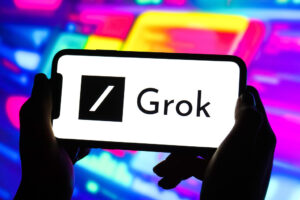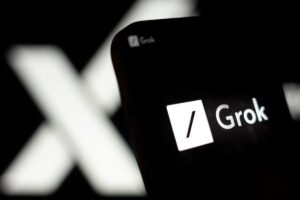Exploring Automated Crypto Trading with Grok 3: The Results

Understanding Grok 3 in Crypto Trading
Key Takeaways
- Adaptive Predictions: Grok 3 updates its forecasts based on real-time data and market trends.
- Enhanced Accuracy: Using both technical analysis and sentiment data, Grok 3 can spot favorable trading opportunities.
- Importance of Backtesting: Testing strategies with historical data is vital to refine trading conditions.
- Role of Human Oversight: Although Grok 3 can automate trading, human intervention is necessary for managing unexpected market changes.
Crypto trading is challenging due to its unpredictable nature, with prices often experiencing drastic fluctuations. As a result, more traders are turning to automated tools to make their trading easier and more efficient. Among these tools is Grok 3, an advanced artificial intelligence (AI) model developed by xAI, a company founded by Elon Musk.
Grok 3 was not specifically designed for trading; however, its capabilities in analyzing data, identifying patterns, and interpreting trends have persuaded many traders to experiment with it for automation. The premise is straightforward: let Grok 3 handle data-driven decisions to minimize emotional biases that frequently lead to trading errors. But how effective is it? While some users have seen positive outcomes, others find it unstable, particularly in volatile markets.
What is Grok 3?
Grok 3 is an innovative AI model created by xAI. It primarily focuses on natural language processing, but its adaptability has sparked interest among traders exploring its potential to enhance crypto trading. Unlike traditional trading bots that operate on fixed rules, Grok 3 can analyze various data sources, making it capable of spotting patterns that might otherwise be missed.
Why Traders Like Grok 3
Traders are attracted to Grok 3 for its ability to process complex data, a significant advantage in the crypto markets known for sudden sentiment shifts. Here’s how it stands out:
- Market Sentiment Analysis: Grok 3 can evaluate social media and news to capture changing sentiments, influenced by emotional factors like FOMO (Fear of Missing Out) and FUD (Fear, Uncertainty, Doubt).
- Hidden Pattern Recognition: Its machine learning features help in identifying subtle correlations that traditional bots might miss, such as linking changes in social sentiment with increases in whale activity.
- Dynamic Prompt-Based Strategies: Unlike fixed-rule bots, Grok 3 enables traders to develop complex strategies using everyday language.
Automating Trades with Grok 3
Grok 3 is not your average trading bot, as it does not directly execute trades or link to exchanges. Instead, it assists in developing intelligent, quick, and adaptable trading systems. Traders use Grok 3 to compose trade strategies and execute them more effectively.
For instance, traders can prompt Grok 3 to create code for buy/sell logic, incorporating various parameters such as slippage and profit targets. This code can then be integrated into decentralized finance (DeFi) platforms or expanded with APIs from decentralized exchanges like Uniswap.
How to Set Up Grok 3 for Crypto Trading
Step 1: Select a Compatible Trading Platform
Grok 3 needs to connect to third-party platforms that support API automation, as it can’t connect directly to exchanges. Some effective platforms include:
- 3Commas: Great for executing trades with automated strategies.
- TradingView: Useful for generating trading signals.
- CryptoHopper: Offers tools for building custom strategies with API access.
Step 2: Integrate Grok 3
Integration requires various strategies:
- API Automation: Use tools like Zapier to link Grok 3’s insights with trading platforms.
- Custom Scripts: Tech-savvy traders can develop Python scripts to automate trading processes based on Grok 3’s analyses.
- No-Code Tools: Create triggers for basic trading actions using services like IFTTT.
Step 3: Define Trading Strategies
To maximize Grok 3’s effectiveness, clearly outline strategies that incorporate elements like:
- Technical indicators: Such as RSI and MACD.
- Sentiment Analysis: Observing social media and news for market sentiment shifts.
- Onchain Data: Tracking whale movements and significant inflows/outflows.
Step 4: Backtest Strategies
Before launching Grok 3 in the live market, conduct thorough backtesting to assess the effectiveness of your strategies. This process helps spot:
- How accurately trade signals align with profitable outcomes.
- Excessive signals during erratic market conditions.
- Opportunities for improvement in parameters and thresholds.
Managing Risks
Automating crypto trading entails inherent risks, so it’s crucial to implement risk management controls:
- Stop-loss Orders: Automatically exit positions that exceed set loss limits.
- Position Limits: Restrict trading size to lower exposure risks.
- Trailing Stops: Secure profits while minimizing losses during upward trends.
Limitations of Grok 3
Despite its advantages, Grok 3 does have some limitations:
- Data Loss: Inaccurate or missing real-time data can lead to flawed trading signals.
- Forgetfulness Issues: Grok 3 may fail to remember previous sessions, complicating ongoing trading strategies.
- Inherent Biases: If Grok 3 relies on incomplete sources, it may produce misleading analyses.
- Slower Response Times: The detailed processing of prompts can cause delays, impacting timely trade execution.
- Dependence on Prompts: The quality of Grok 3’s output heavily relies on how clearly prompts are structured.
While AI tools like Grok 3 contribute significantly to automating crypto trading, they are not foolproof. Their effectiveness relies on accurate data and strategic inputs, emphasizing the need for careful oversight and test runs in the ever-changing crypto landscape.






